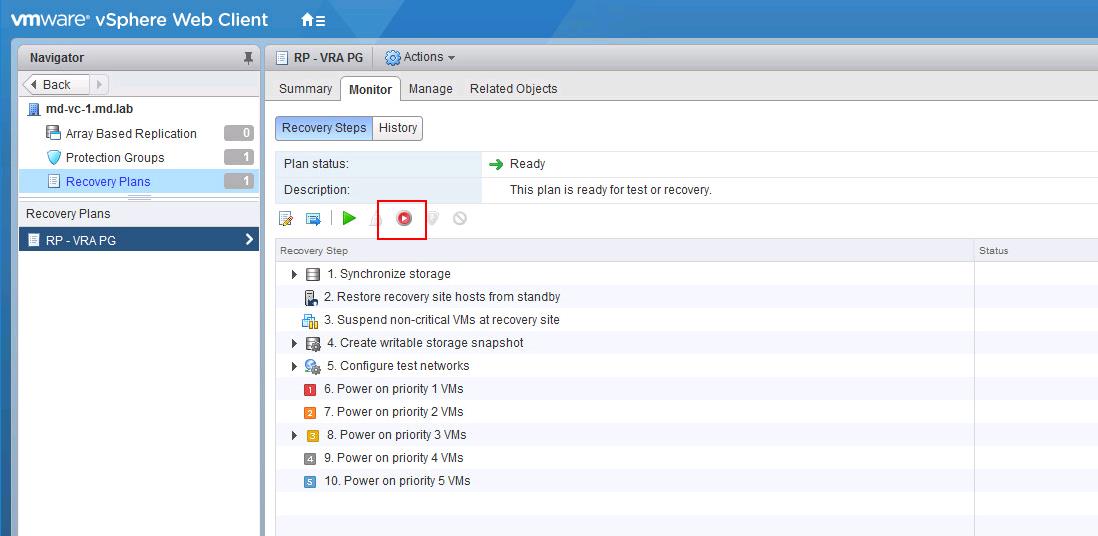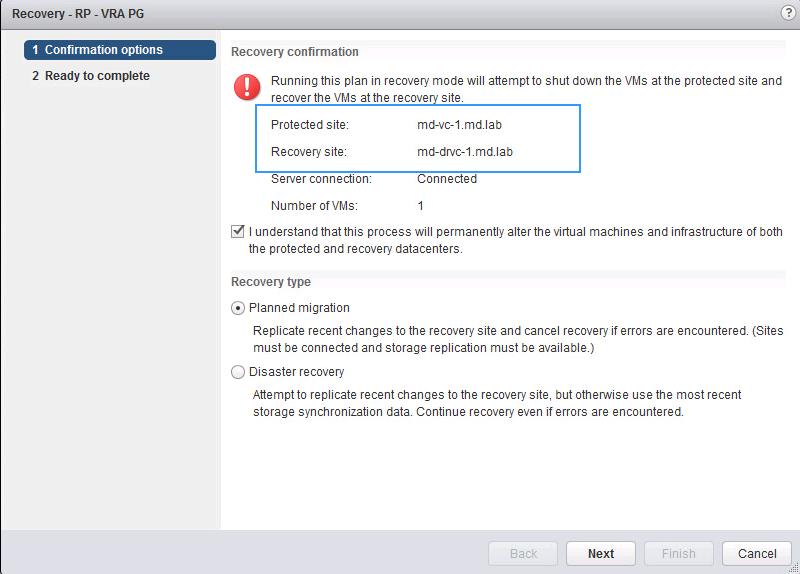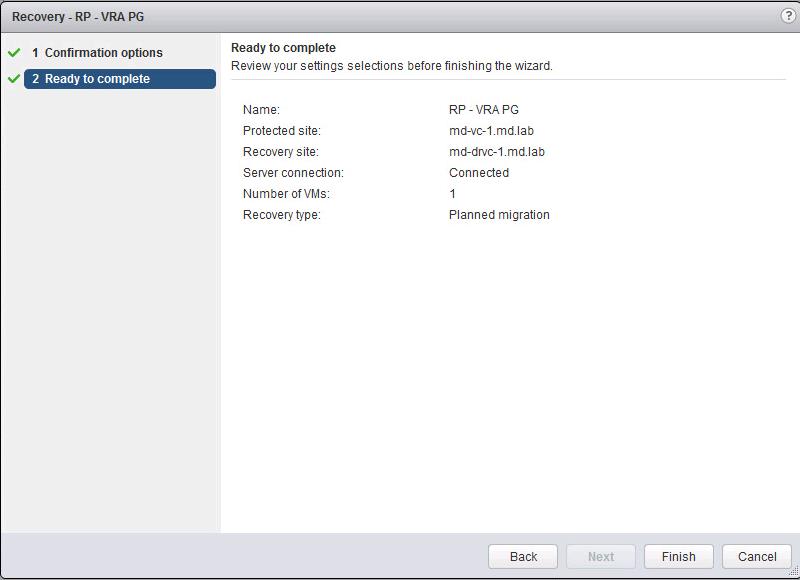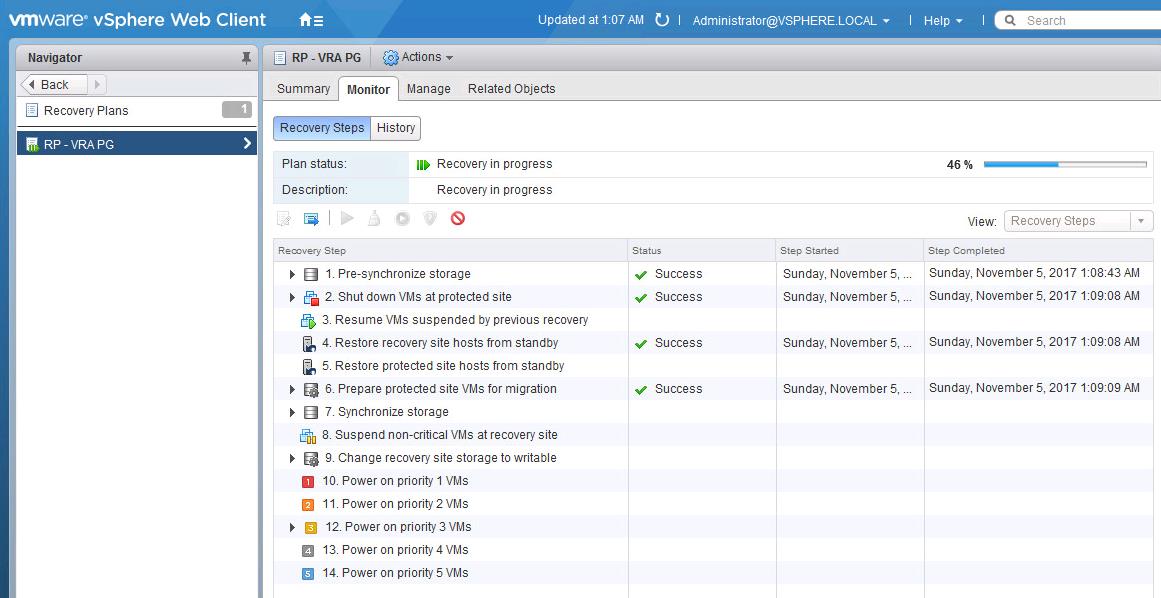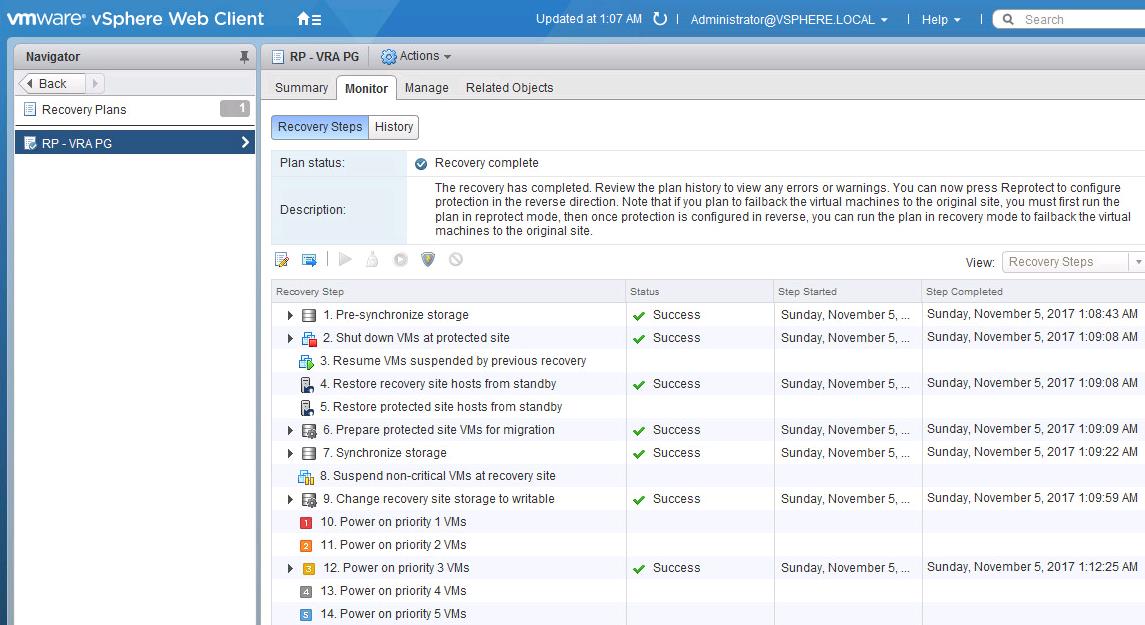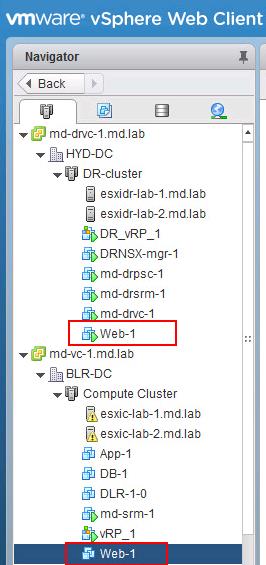VMware SRM recovery plan can be used to perform Test recovery (failover testing), planned migration and disaster Recovery failover to the recovery site. VMware SRM will not perform the automatic failover of VM’s in the primary site to recovery site in case of data center failures. I have explained how to run test recovery of vSphere Replication-based recovery plan.
In production scenarios, we cannot directly initiate the failover of your SRM recovery plans without validating it. VMware SRM has the feature of Test recovery. You can perform the test recovery of the SRM recovery plans to validate the test failover of virtual machines without interrupting the production virtual machines.
With the Test recovery, virtual machines will failover to recovery site without connecting to the actual network. VM’s will connect to the isolated network (bubble network) created by SRM during test failover.
Ok, I talked a lot about Failover. Let’s understand Failover.
What is Failover?
As per Wikipedia, In computing and related technologies such as networking, failover is switching to a redundant or standby computer server, system, hardware component or network upon the failure or abnormal termination of the previously active application, server, system, hardware component, or network. Failover and switchover are essentially the same operations, except that failover is automatic and usually operates without warning, while switchover requires human intervention.
How to Perform Failover of vSphere Replication based Recovery Plan
You can run the failover of vSphere Replication based recovery plan once all the SRM configuration is completed.
To run the failover, Login to vCenter Server using vSphere Web client -> Site Recovery Manager -> Sites-> Recovery Plans -> Select the recovery plan -> Monitor -> Recovery Steps -> Press Red Play button to start the recovery of vSphere Replication based recovery plan.
Recovery confirmation page displays the information about protected site and recovery site. It shows warning about running this recovery plan will shut down the VM’s at protected site and recover the VMs at the recovery site. Select the Checkbox to agree to the failover terms.
As discussed, there are 2 types of recovery type in SRM
Planned Migration: Planned Migration will replicate the recent changes from the protected site to recovery site and cancel recovery of errors are encountered. Both the sites must be connected and storage replication must be available for this task to succeed.
Planned Migration can be used for planned Disaster recovery test, Datacenter migration or datacenter maintenance tasks on the primary site. It can also be used for failover and recovery testing with the planned downtime to validate the failover test cases of any organization.
Disaster Recovery: Disaster recovery will attempt to replicate the recent changes to the recovery site. If any errors encountered, SRM uses the most recent replication data to continue with failover of virtual machines to the recovery site.
Disaster recovery option can be used for the scenario such as datacenter down, disaster recovery failover during natural calamities, unplanned power outage or unplanned downtime to the primary site.
Since I am performing the planned migration, select the Planned migration and click Next.
It will display the recovery information and number of VM’s failover as part of this operation. Click on Finish.
SRM recovery plan will have multiple steps involved to complete the failover of virtual machines from the primary site to the recovery site.
Recovery is completed successfully.
Once recovery is completed, I can see my protected virtual machine “web-1” is powered-on in my recovery site “HYD-DC” and got powered off in primary site “BLR-DC”.
That’s it. We have done with the failover of virtual machines which are part of vSphere replication based recovery plans. Now VM is moved to the recovery site.
For the continuous protection of virtual machines, we need to reverse the direction of replication from secondary site to primary site. To perform that, we need to perform the reprotect of the recovery plan. I will explain the reprotect operation in the next post.
I hope this is informative for you. Thanks for Reading!!!. Be social and share it with social media, if you feel worth sharing it.
Disaster Recovery :
VMware Site Recovery Manager (SRM 6.0) Part 1- Overview and Architecture
VMware Site Recovery Manager (SRM 6.0) Part 2 – VMware SRM 6.0 installation
VMware Site Recovery Manager (SRM 6.0) Part 3 – Configuring SRM Site Pairing
VMware Site Recovery Manager (SRM 6.0) Part 4 – Installing Storage Replication Adapters (SRAs)
VMware Site Recovery Manager (SRM 6.0) Part 5 – Configuring SRM Array Manager
VMware Site Recovery Manager (SRM 6.0) Part 6 – Creating SRM Resource Mappings
VMware Site Recovery Manager (SRM 6.0) Part 7 – Configuring SRM Folder Mapping
VMware Site Recovery Manager (SRM 6.0) Part 8 – Configuring SRM Network Mapping
VMware Site Recovery Manager (SRM 6.0) Part 9 – Configuring SRM Placeholder Datastores
VMware Site Recovery Manager (SRM 6.0) Part 10 – Creating SRM Protection Group
VMware Site Recovery Manager (SRM 6.0) Part 11 – Creating SRM Recovery Plans
VMware Site Recovery Manager (SRM 6.0) Part 13 – Cleaning up Test Recovery
SAN Replication :
VMware SRM 6.0 Array Based Replication Part 1 – Deploying HP Store Virtual VSA
VMware SRM 6.0 Array Based Replication Part 3 – Configuring HP StoreVirtual VSA Management Group
VMware SRM 6.0 Array Based Replication Part 5 – Configuring HP StoreVirtual VSA Replication


